Light plays a significant role in how plants photosynthesize and grow. By growing in a controlled indoor environment, you can manipulate your lighting recipe by choosing the best lights designed for horticulture, adjusting your lighting schedules, or modifying the spectrum.
There are several lighting options for indoor agriculture applications – but which one is best? This article will discuss the best lighting solutions and how your lighting selection can impact your indoor farm.
What Plants Need to Grow Indoors
While traditional farms can rely on the power of the sun to grow their crops, indoor plants require artificial lighting. But lighting is only one component of a successful grow system. For example, lighting output impacts the environment and nutrient uptake rates. Before we begin to discuss what type of light is best for indoor cultivation, you must first understand the variables that affect plant growth and how they are interconnected.
Here are nine essential parameters that affect a plant’s ability to grow properly:
- Light
- Temperature
- Humidity
- Oxygen
- Co2
- Airflow
- Nutrients
- Water
- Root-Zone Temperature
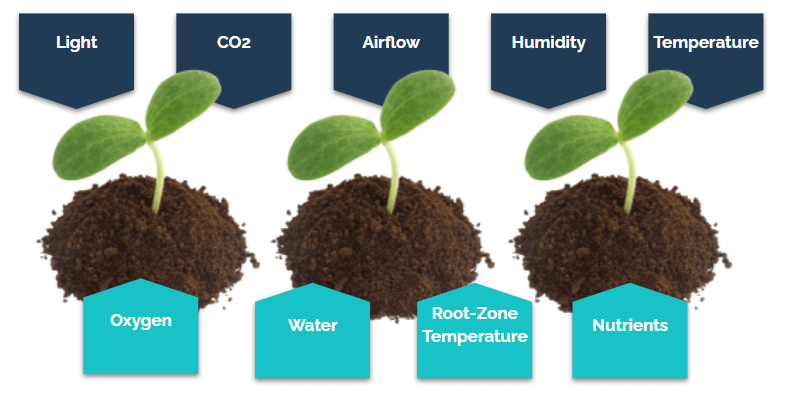
Light
Light plays a huge part in photosynthesis. Therefore, understanding the growth characteristics of your plants and how they respond to light is an essential part of designing your space to yield a successful crop. The amount of light reaching your plants will affect their growth, including seedling germination, overall growth rate, and flowering if applicable.
For example, certain shade-tolerant plant varieties like kale and lettuce will exhibit undesirable coping strategies if given too much light. These veggies react to extreme light by growing tall and thin leaves rather than the preferable short and bushy leaves.
Conversely, shade-avoidant plants like cannabis and green beans will usually require higher light intensities. Although, lighting schedules are still an excellent tool for promoting various results during the different stages of growth.
Temperature and Humidity
The ideal temperature and relative humidity (RH) level for plants depend on their species. Some will thrive in warmer, humid climates, while others will do better in dryer conditions. Indoor farms can manipulate the climate setpoints, giving you the power to keep a consistent temperature and RH level all year long.
Don’t expose your indoor plants to sudden temperature and air moisture changes. These swings could stress your plants, damage them, make them more susceptible to mold or powdery mildew, or stunt their growth. The ideal temperature will depend on what type of plants you are cultivating. For example, leafy greens do well in temperatures between 60 and 70 degrees Fahrenheit, whereas fruiting plants like cucumbers, tomatoes, and cannabis thrive with temperatures as high as 84 degrees Fahrenheit.
It’s also worth noting that root-zone temperatures are much easier to manage indoors than on outdoor in-ground farms. Hopefully, your design teams have appropriately accounted for temperature, humidity, irrigation, and airflow.
Oxygen, CO2, and Airflow
You probably understand the vital role that carbon dioxide (CO2) plays in photosynthesis. And yes, you can artificially deliver clean CO2 into your grow spaces via a CO2 dosing system. Higher concentrations of carbon dioxide make plants more productive because photosynthesis relies on using the sun’s energy to synthesize sugar out of carbon dioxide and water. Plants and ecosystems use the sugar both as an energy source and as the basic building block for growth. But don’t forget that your plants also need oxygen to reach their roots. If you plan to grow aeroponically, this won’t be a concern, but you should keep this in mind if you use traditional soil media.
Consistent airflow is another crucial parameter to yielding a healthy crop indoors. Without proper ventilation throughout the grow room, pockets of humidity and cold or warm air can form. Therefore, your mechanical designer should account for an adequate air circulation system.
Nutrients and Watering
According to a study conducted by the University of Idaho, plants, especially those grown indoors, require certain nutrients to grow healthy and strong. There are 17 essential nutrients that plants need for survival and general health. Some of the important elements that contribute to plant health include carbon, oxygen, and hydrogen. Other important but less abundant nutrients include calcium, copper, iron, manganese, molybdenum, sulfur, nickel, boron, and zinc (Mahler, 2004). How you deliver nutrients depends on your grow media and irrigation/fertigation method. You can add nutrients to your soil or your water.
Keep in mind that lighting and nutrients go hand-in-hand. Adding more light means that your plants will need more nutrients to increase production.
Factors to Consider When Comparing Grow Lights
When it comes to indoor growing, you need to mimic the same plants being grown outside. Plants have evolved to survive outdoors, and they have adapted over time to thrive in their native environments.
This includes replicating the lighting the plant prefers. This is one of the critical factors of a successful indoor garden, so you must understand how lighting impacts growth and development.
Light Intensity
Light intensity can be defined as the amount of energy a light source releases per unit area. The most common measurements for lighting intensity are PAR, PPF, and PPFD.
Photosynthetic Active Radiation (PAR) describes the part of the light spectrum that plants use for photosynthesis, which ranges from 400-700 nanometers.
Photosynthetic Photon Flux (PPF) describes how much visible light is being emitted. This is measured in micromoles per second.
Photosynthetic Photon Flux Density (PPFD) describes how much visible light is being emitted given a specific area. This is measured in micromoles per square meter per second.
Keep in mind that the way various plant species respond differently to spectral radiations and intensities also depends on growing conditions. It is imperative that you provide the right environment coupled with the proper light intensity for the crop you are growing.
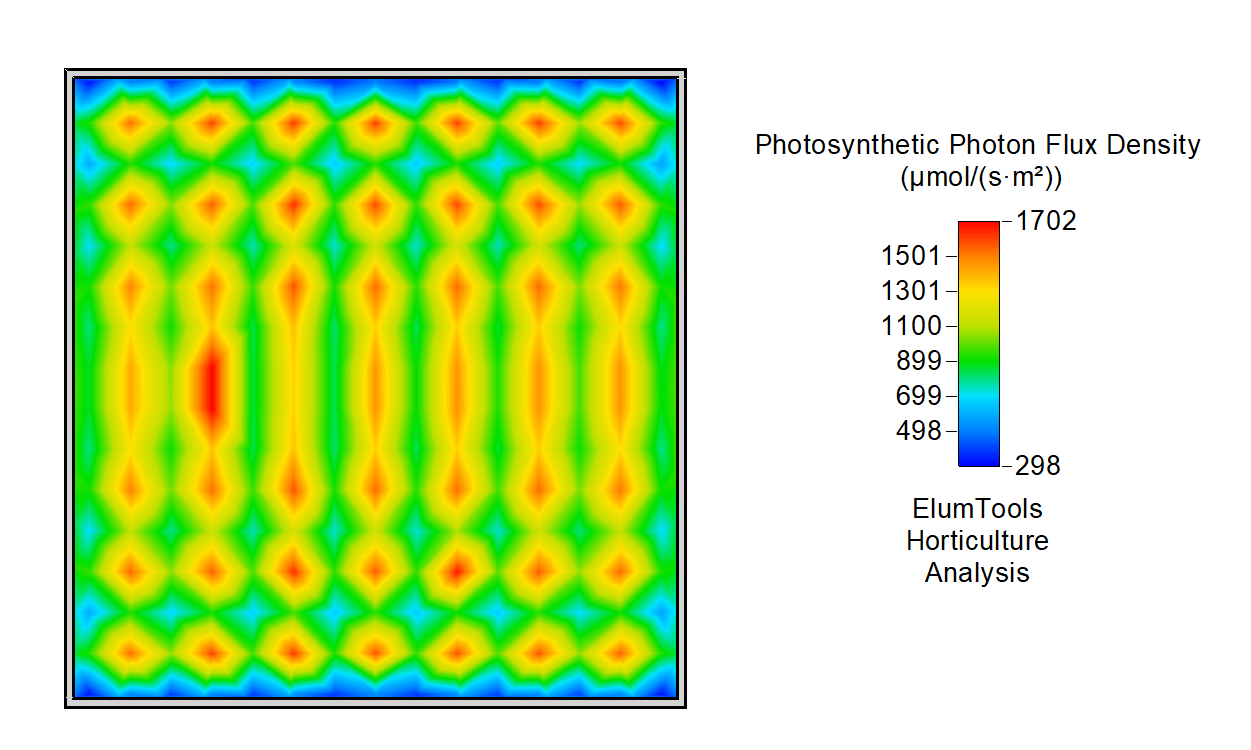
Wattage
The total wattage of a grow light can sometimes be mistaken as an indicator of how powerful a light will be. Instead, look for the light’s PPF rating to determine how much light it will produce. Knowing a fixture’s wattage is important for calculating energy requirements, however, as it is a measurement of how much electricity the light fixture takes in.
Additionally, you will need to know the wattage for each fixture to size proper sensible load factors to maintain the optimum grow environment. More watts equal more BTUs increasing sensible loads and increasing the amount of HVAC needed to maintain proper temperatures.
Distance
Height and beam angle are a key part of determining how to mount your lights for optimal performance. The goal here is to minimize light loss while maximizing PPFD.
For example, if you were to shine a flashlight at a wall near you, you would see a small, clearly defined circular light. However, if you began to back away from the wall, the light would become less intense and larger as you moved away. If you were to shine multiple flashlights at the wall, you would see the lights overlapping at a certain distance from the wall, in which the overlapping areas would appear brighter than the rest of the illuminated areas.
This represents what occurs on the plant canopy in a grow room. Work with your lighting provider to properly plan your lighting layout to best maximize your lighting intensity.
Color Spectrum
Color plays an essential role in the growth of indoor plants. The spectrum of light that a plant receives directly affects the rate of photosynthesis and the quantity of chlorophyll produced by the plant.
Sunlight contains the complete spectrum of light including all colors of the rainbow: red through yellow to blue and violet. Like plants growing outdoors in the sunlight, indoor plants grow best under full-spectrum bulbs, which produce a balance of cool and warm light that replicates the natural solar spectrum.
The color spectrum is measured in nanometers (nm), which is one-billionth of a meter. The visible color spectrum ranges from roughly 380 nanometers (violet) to 740 nm (red). The wavelengths between these two ends are infrared and ultraviolet, neither of which is visible to humans.
The colors within the visible light spectrum have different effects on plant growth. Blue stimulates plant growth. Green and white light help with canopy penetration and make it easier for the human eye to spot symptoms of disorders and disease. Red is the most efficient energy source and plays the most important role in photosynthesis.
Differences in Grow Lighting Types
There are a variety of grow light types to choose from. Each option has its own benefits and drawbacks, so it’s important to understand the differences before making a decision. We’ll take a look at the most common grow lighting types and discuss how they work.
LED Lighting
LED lighting for plants can provide a wide spectrum of light to meet your specific requirements. These lights require less energy than other fixtures, reducing your electric bill and carbon footprint. They also produce very little heat waste. Not only does this help minimize their impact on your HVAC system, but it also means that you can safely mount them closer to your canopy. This helps reduce light loss and makes it possible to grow on multiple tiers.
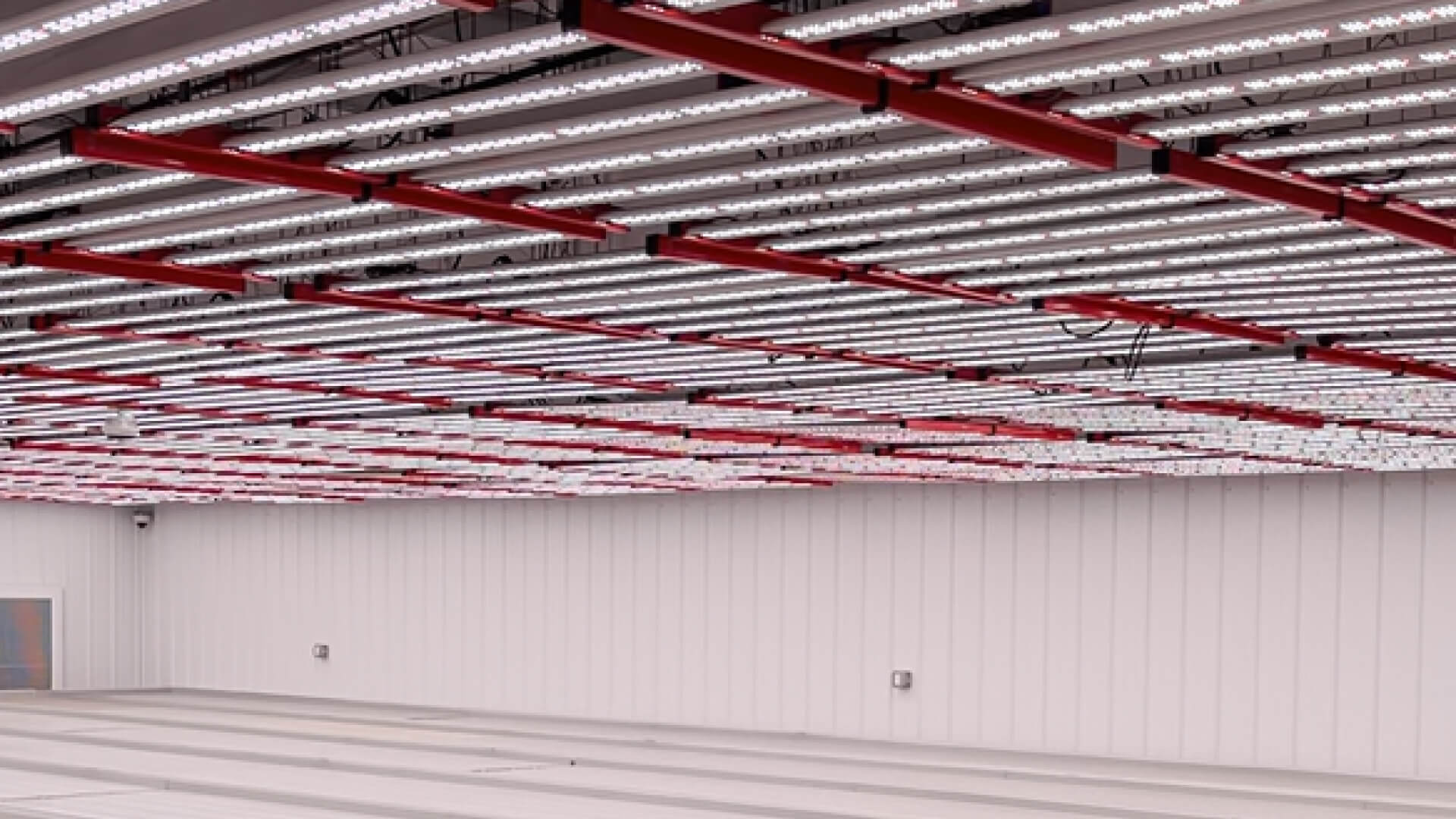
Pros:
- LEDs are more energy-efficient and eco-friendly than other lighting options.
- LEDs are available in a wide spectrum of colors.
- LED lights radiate little heat. This means that you can safely mount them just 12-inches above the canopy.
- LEDs are more efficient creating an increase in micromoles per watt. Each watt of lighting, regardless of lighting type, creates 3.41 BTU of heat. Using less watts will decrease the heat, thus decreasing total cooling tonnage needed.
- Depending on where you are located, there may be rebate opportunities available for growers.
- They are long-lasting and do not require the labor and costs of regular bulb replacements. A proper LED fixture should come with a 5-year warranty and an expected lifespan of 5-7 years depending on total usage.
- LED lights can be dimmed with no change to spectrum.
Cons:
- LED grow lights tend to be more expensive than other lights. But while the initial investment may be higher, there are potential rebates and energy savings that can help offset the initial price tag.
Fluorescent Lighting
For years, people have used fluorescent lighting to grow plants indoors. These lights are relatively cheap to purchase and operate. However, there are several drawbacks to using fluorescent lighting that have led to more and more growers opting for LEDs instead.
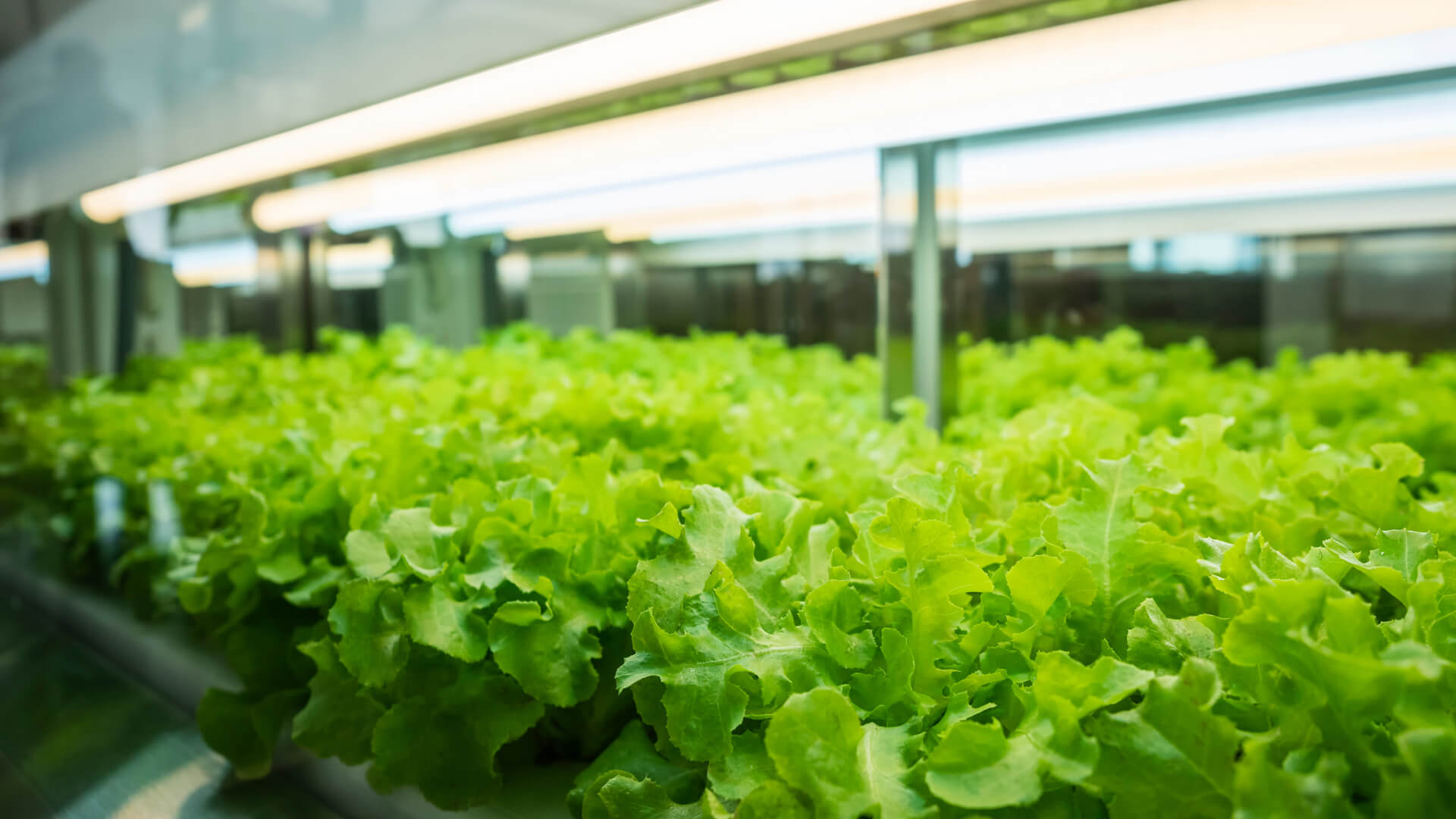
Pros:
- Fluorescent lights are easy to find and are widely available.
- Some fluorescents are compact, meaning they fit easily into a standard lamp socket. Compact fluorescent lamps are especially convenient in small spaces since they do not require a ballast or shop light fixture.
- Fluorescents are inexpensive.
Cons:
- These lights radiate heat, which can damage plants if mounted too closely.
- Fluorescent grow lights tend to have a lower amount of micromoles per watt than other grow lights. This means that you will need more fluorescent lights and increased wattage to produce the same amount of light as other types of fixtures.
- Fluorescent bulbs, and also high-intensity discharge (HID) lamps and neon light bulbs, contain small amounts of highly toxic mercury and are considered environmentally hazardous.
- They require frequent bulb replacements.
HID Lighting
High-intensity discharge lights (HID) bulbs produce a lot of light, although many of today’s LED grow lights can match and surpass HID lighting intensities. HID lights are made from a gas-filled tube and electrodes, and electricity reacts with the gas to produce a bright light.

Pros:
- HID grow lights have a relatively low initial cost compared to LEDs, and they produce a lot of light. This makes them ideal for growing cannabis or other plants that need a lot of light.
Cons:
- HID bulbs eventually succumb to wear and tear. To get the most out of these lights, it’s important to change the bulbs frequently. Typically you will replace these bulbs annually or suffer light loss, and ensuing yield loss.
- HID lights usually require a warm-up period after being turned on to reach their full intensity.
- HID grow lights require increased wattage compared to LEDs. Increased wattage increases BTUs, and this then requires increased cooling capacity.
- HID lighting radiates heat which requires the light be further away from the plant.
- HID lighting is not suitable for vertical grow racks due to the distance needed between the bulbs and the plant canopy.
- Dimming of HID lights significantly alters the spectrum output and can be damaging to your crop.
What Type of Light is Best for Growing Plants Indoors?
We’ve discussed the parameters for plant growth, light intensity, spectrum, and the differences between the most common fixtures. So, what is the best type of grow light?
The best grow light is the one that best serves your unique needs.
Understand Your Requirements
Your first step should be to research your ideal PPFD. This will depend on the plants you intend to grow, their growth stages, and the layout of your grow room. For example, most cultivators target 1100 PPFD for cannabis when it is in flower, whereas lettuce is typically grown at 350 PPFD. Keep in mind that flowering and fruiting plants will usually require an increase in light intensity.
Compare Specs and Layouts
Once you understand your lighting goals, you can begin to compare the specs and prices of various fixtures. Contact multiple indoor agriculture lighting vendors to receive estimates and proposed lighting layouts. Any reputable commercial horticultural lighting supplier should be able to provide you with a lighting map to give you a more accurate view of what your room’s lighting options will look like. Beware any lighting company that provides you lighting layouts measuring lux or lumens. Proper horticultural lighting maps will measure PPFD and PAR.
DLC-Listing
The DesignLight Consortium (DLC) is a non-profit organization that provides a free-to-access qualified products list of horticultural lighting fixtures that have been screened to meet certain quality and performance standards. Just look for the DLC logo on any lighting products you may be interested in.
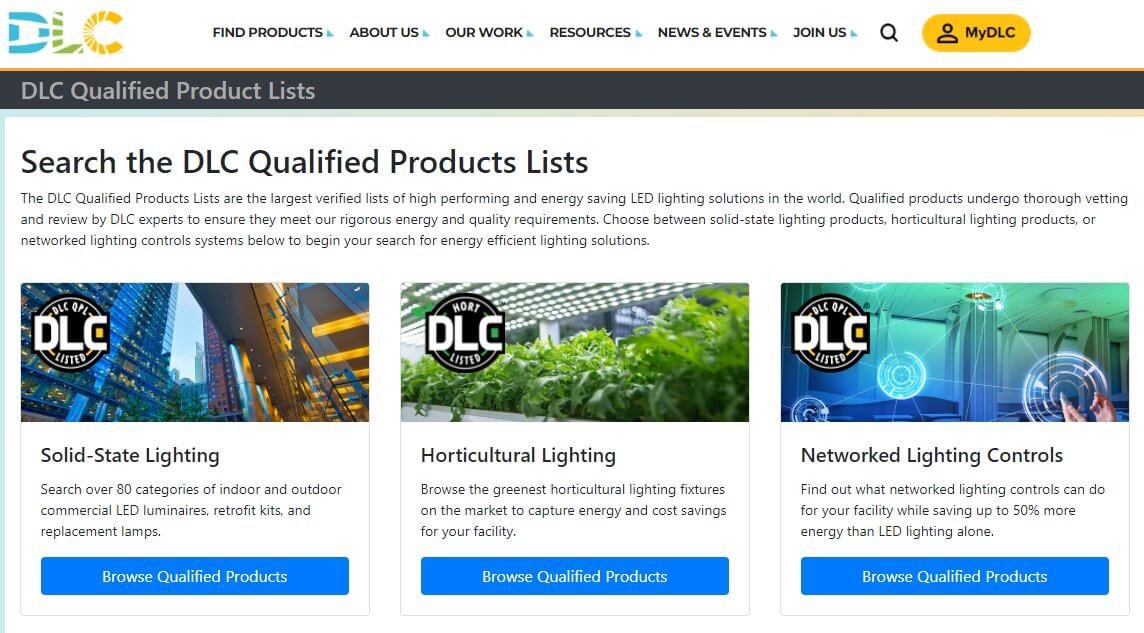
Light with the Lowest Cost Per Micromole
What if we told you there was an affordable LED grow light that could offer the lowest cost per micromole, was backed by an industry-leading limited warranty, and was DLC-listed?
After 15+ years of working with cultivators to provide CEA-specific climate systems, we partnered with BVV to offer a grow light that was engineered to meet the unique demands of growing indoors. The Neocision Spectra LED series was designed to make high quality horticultural lighting solutions more accessible to commercial growers.

To learn more about our Neocision Spectra LEDs, contact us today!

